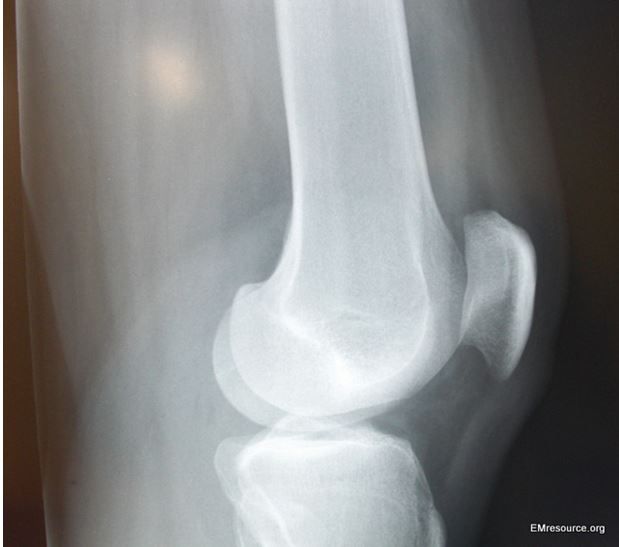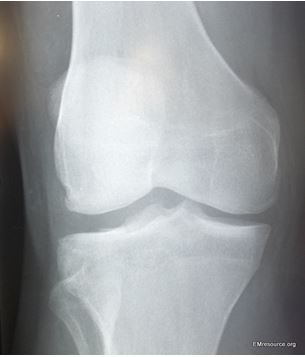- CDC
- Heart Failure
- Cardiovascular Clinical Consult
- Adult Immunization
- Hepatic Disease
- Rare Disorders
- Pediatric Immunization
- Implementing The Topcon Ocular Telehealth Platform
- Weight Management
- Monkeypox
- Guidelines
- Men's Health
- Psychiatry
- Allergy
- Nutrition
- Women's Health
- Cardiology
- Substance Use
- Pediatrics
- Kidney Disease
- Genetics
- Complimentary & Alternative Medicine
- Dermatology
- Endocrinology
- Oral Medicine
- Otorhinolaryngologic Diseases
- Pain
- Gastrointestinal Disorders
- Geriatrics
- Infection
- Musculoskeletal Disorders
- Obesity
- Rheumatology
- Technology
- Cancer
- Nephrology
- Anemia
- Neurology
- Pulmonology
Occult Tibial Plateau Fracture
An occult fracture in the knee is most often a nondisplaced lateral tibial plateau fracture.
Figure 1.

Figure 2.

A 31-year-old man presents to the emergency department with diffuse knee pain after a low-energy injury. He said it “gave out” while he was dancing, doing “the Twist.” He denies any other injury or pain or any prior orthopedic problems. He felt fine just before the injury but now states he can barely walk. He is otherwise healthy with no medical problems and takes no medication. Just to be sure you eliminate identifiable risk factors for early osteoporosis, such as steroid or immunosuppressant use, seizure medications, reflex sympathetic dystrophy, or an eating disorder. He denies all.
On examination, he is afebrile with otherwise normal vital signs. He is guarding his injured knee but has symmetric pulses in his feet. His knee flexion is mildly limited, but extension is full. With his knee as flexed as is tolerable, you palpate just lateral to the patellar tendon and note the bulge of a small effusion. You compare it with the other knee and note that there is definitely a difference. There is no joint line tenderness and the ligaments are all fortunately stable. Otherwise, the rest of his physical examination is normal. You ask him to walk, which he can do, but with fairly significant discomfort.
Based on criteria from the Ottawa Knee Rule, the patient doesn’t need x-ray films, but you feel something is wrong here, especially with the acute effusion.
You let your judgment trump the imaging criteria and order a knee x-ray film; results are shown at right (Figure 1).
Answer: Occult tibial plateau fracture
The x-ray film demonstrates a fat-fluid level. Even if no fracture is actually seen, a fat-fluid level means an occult fracture is present-a finding similar to the fat-pad sign after an elbow injury. In the knee, the occult fracture is most often a nondisplaced lateral tibial plateau fracture. The mechanism for this injury (rotating the upper body with all weight on one leg) is very unusual because it is usually the result of substantial force, such as being struck by a car or a fall from a height. Ligamentous injury complicates this fracture in about 25% of cases.
Management is usually nonoperative for nondisplaced or minimally displaced fractures, but surgery is required to align the joint surface when there is significant displacement. No fracture was seen on any views of our dancing patient, but Figure 2 is an x-ray film of a basketball player’s knee after it had been hyperextended and also shows a fat-fluid level on the lateral view. The AP view (not shown) revealed a subtle lateral plateau fracture.
Complications of tibial plateau fractures may include vascular injury in high-energy cases. Chronic arthritis may develop as a result of involvement of the joint surface.
See the Table below for more details and for the Ottawa Knee Rule, a clinical decision aid to help determine who actually needs knee x-ray films. It should probably be considered a “tool” rather than a “rule.”
Table.
